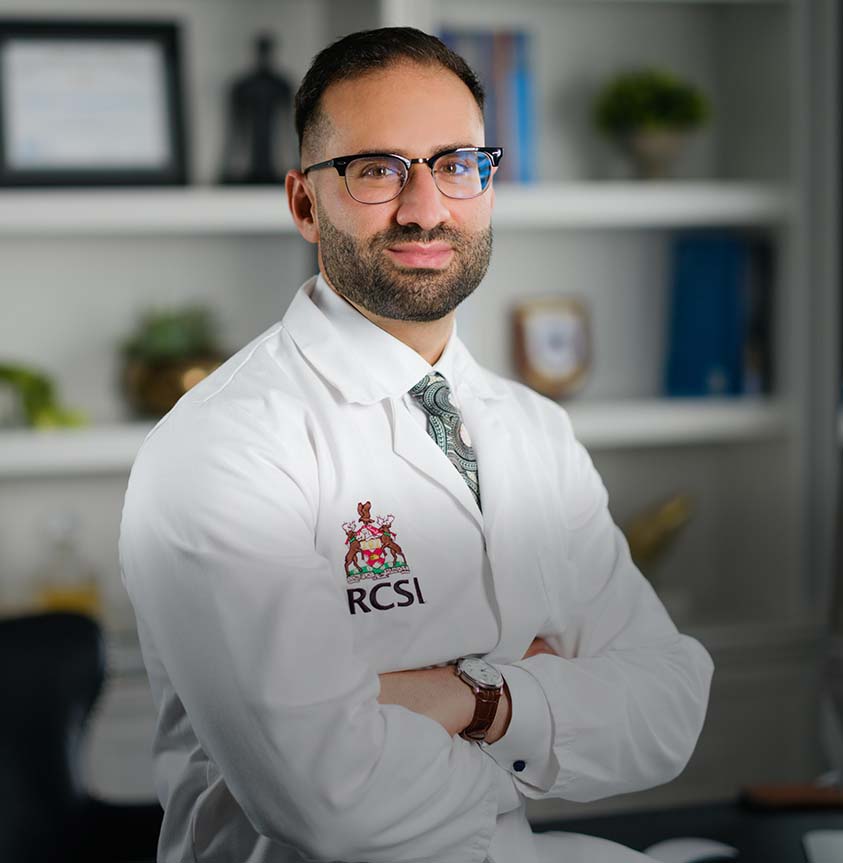One of the most common concerns among patients seeking orthodontic treatment is a narrow upper arch, often presenting as a crossbite on one or both sides of the mouth. Fortunately, there are effective orthodontic solutions for narrow palate issues that can help address these concerns.
For children under 14, treatment is usually simple. A tooth-supported rapid palatal expander (RPE) is used to widen the upper jaw. At this age, the mid-palatal suture remains open and flexible, facilitating easier skeletal (bony) expansion.
As patients age, the palatal suture begins to fuse. This makes traditional expanders less effective for achieving true skeletal expansion.
I usually recommend a more advanced method called MARPE (Miniscrew-Assisted Rapid Palatal Expansion) for patients aged 13 or older. MARPE appliances, such as the MSE or Tiger Power Screw, apply force directly to the palatal bones through mini-screws anchored in the palate, making expansion more effective.
In patients over 25, the resistance to expansion increases significantly. To address this, a minimally invasive surgical facilitation is often added. This helps reduce resistance in the fused suture and improves the predictability and stability of the expansion.
There’s a lot of buzz online about maxillary expansion improving breathing. While expansion can help in some cases, many claims exaggerate the impact.
Breathing issues are usually multifactorial. Common causes include:
It’s essential to evaluate all contributing factors before recommending expansion as a treatment for breathing problems.
Understandably, many adults are hesitant about surgery. I often see patients who’ve been told that surgically assisted expansion is their only solution.
However, many of these patients may benefit from non-surgical dentoalveolar expansion, especially using a customised lingual appliance like the WIN system with its CAD-CAM expasnion and compression arch wires.
Professor Dirk Wiechmann, the inventor of Incognito and the WIN system, developed a technique using expansion archwires in the upper jaw and compression wires in the lower jaw. This method can correct crossbites without the need for MARPE appliance, and stably and predictably. Click here to check the research.
The WIN system’s custom-fit and precision wires are key to its success. Yet, many clinicians don’t offer this option, not because it doesn’t work, but because lingual orthodontics requires specialised training, and many are unfamiliar with the research supporting this technique.
Successful treatment always starts with the right diagnosis. While surgery is sometimes necessary, many patients can achieve great results with less invasive options.
If you’re concerned about a narrow upper jaw or crossbite, I’d be happy to help. Click here to book a consultation, and we’ll explore the treatment options that best suit your individual needs and goals.
Back to Blog
I recommend and prescribe orthodontic treatments to my patients as if they were my own family and I value meaningful relationships based on communication, confidence and trust.
“We highly recommend Dr Erfan Sallom, he transformed our daughter's teeth and she’s extremely happy with her beautiful smile! We were looking for a Orthodontist...”
“I was very anxious about orthodontic treatment and as such delayed it for years. I had no need to be nervous with the expertise and...”
“I would really recommend anyone to Dr Erfan Salloum, my experience with Erfan was amazing. I had no issue he was very knowledgeable about his...”
“I have just finished my two year orthodontic treatment with Dr Erfan and I would highly recommend. He explained everything perfectly about the treatment plan...”



